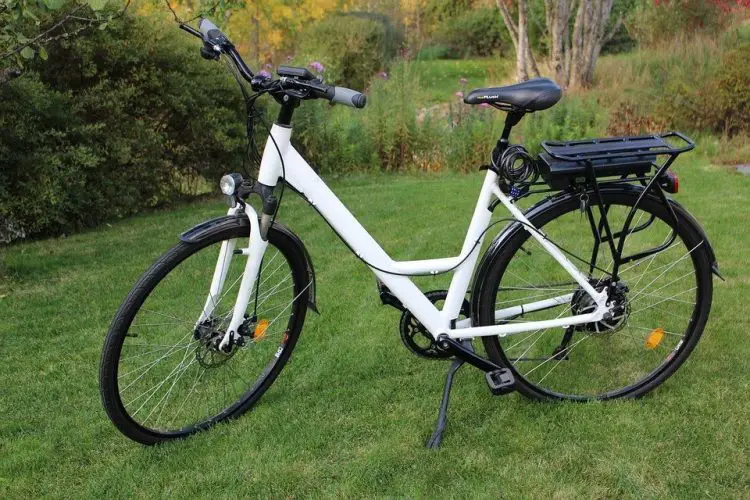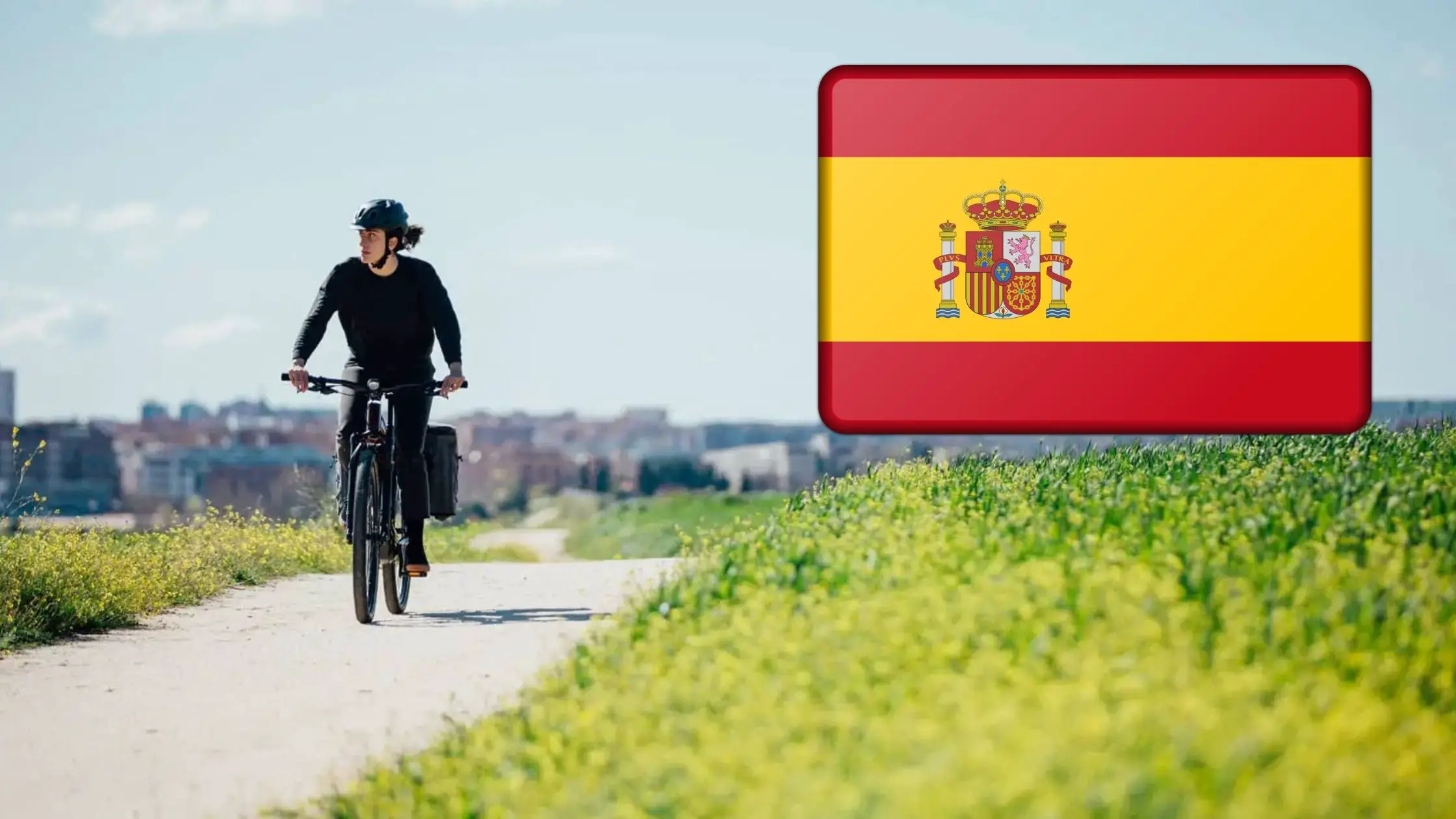Last Updated on January 9, 2023 by Igor Karni

Electric bicycles have been around for a few years now, but not yet for very long. First models on electric bicycles were introduced in the 1990s (Wikipedia link). To compare, conventional bicycles have been known since the early 1800s (Wikipedia link). There are nearly two centuries separating these two generations!
How to use an electric bike? Use an electric bike as you would use a conventional bike. Take it on casual city rides, or commutes to work, or on long cross-country trips. Use the power of an electric motor to help you tackle accends and hills. Smartly combine electric and mechanical gears to ride as if it was always flat.
Let’s see if we can get the basics about e-biking in place.
Never used an electric bike, what do I need to know first?
There are still many questions about electric bikes. How to use an electric bike? Anything special I need to know? Is an electric bike a moped? Can an electric bike ride by itself or do I need to pedal all the time as I would do on a conventional bike? How do electric bikes work? Do I need to understand this before I rent or buy an e-bike?
Electric bikes are an evolution of conventional bikes
To put it in simple terms, electric bikes are in many aspects very similar to conventional bicycles. Both conventional bikes and electric bikes have two wheels, a handlebar, a seat, a chain, and two pedals. And, to get either a conventional or an electric bike moving, one has to pedal! Well, pedaling is already not always the case with electric bikes, which I will touch upon shortly.
Electric bikes came as an evolution of conventional bikes, powered by placing an electric motor on a bike. Since the early 1990s, this trend continues to develop very fast and there are opinions that e-bikes and other electrically powered means of transportation will revolutionize transportation (source). Did not happen yet. Let’s see.
In an electric bike, the electric component augments human power, it does not completely replace it. Electric power makes obstacles like hills and headwinds more manageable and allows e-bike riders to travel further without getting as tired.
Read also: Here is why e-bikes are really cool. And, How to select the best city e-bike (with examples)?
Two different types of e-bikes
There are two different types of electric bikes.
The first and most common type is pedal or electric-assisted or pedelec bicycles. The main principle of electric-assisted bicycles is exactly this – electric power is assisting your bike ride. Electrically assisted bicycles are designed so that electric power is activated only when you pedal.
The second type of electric-assisted bicycle is throttle activated. Throttle models are similar to mopeds or scooters. This means that these models can move you forward without you pedaling. A throttle-activated e-bike works just like an electric moped – you turn the throttle on and take off.
You can still pedal your throttle e-bike and get some exercise, but you do not have to. Your e-bike will move by itself.
Main components of an e-bike
As compared to conventional bikes, electric bikes have three additional components, which make them stand out as a separate class.
Battery. Just like any battery, an electric bike’s battery stores electricity to power an electric motor that helps move your bike and you forward. E-bike batteries are rechargeable. Simply charge it for your next trip and take this power with you on a ride.
Read also: What is the difference between e-bike batteries? And, How far can e-bikes go? What is the e-bike range?
Motor. The electric motor takes electric power from a battery and converts it to a moving momentum. On electrically assisted models, your pedaling efforts activate the electric motor. On throttle models, motors are activated by you turning a throttle.
Read also: Front, mid-drive, or rear e-bike motor. Which one to choose? And, What is the difference between e-bike motors?
Power system. A drivetrain or Power system is what connects the motor, battery, and wheels of your electric bike. It provides the power and rotating force (or torque) necessary to turn the wheels of the bicycle.
Most power systems also allow riders to shift gears, making it easier or harder to pedal.

How do electric bikes work?
Battery, motor, power system, and bike’s wheels constitute one system. Given that the battery is charged, once you activate the motor either via pedaling or via throttle, the motor starts turning the wheels and the bike moves forward.
On electrically assisted models (pedelecs) you have to continue pedaling to keep motor activated. Once you stop pedaling or turn the throttle off, your electric bike will still go some distance with a bit of inertia that it has accumulated, but then will stop. It will stop almost immediately, if, for example, you are riding up a hill.
Once the battery is fully discharged, there is no more electric power available to assist with pedaling or via the throttle. You can still pedal your bike using your own muscle power, but there will be no further electric assistance provided until the battery is charged again.
Do I need to pedal an e-bike all the time?
Certainly not, if you are going downhill, for example. If you are riding downhill, good practice would be to switch off electric assistance and just use gravitation force to take you and your bike down the hill. Another good practice would be to use brakes to slow down if required. Electric bikes are just like conventional bikes, if you are going too fast, use brakes.
You also do not need to pedal your e-bike all the time, if you are using a throttle model. Throttle models can go by themselves, without any pedal assistance. This also means that throttle models use battery power during the entire ride, while pedelec bikes are likely to use less power for the same distance.
Read also: Can e-bikes help go up steep hills? And, How to switch electric assistance levels on an e-bike?
If you are using an electric-assisted model, you will have to pedal your e-bike most of the time of your ride. It is a good practice to start on zero gear when launching on your ride. Once you took off, you can switch on the first electric gear and make electric assistance start helping you.
Can I ride an e-bike like a conventional bike?
Yes, you can generally ride an e-bike like a conventional bike. There are a couple of points to take into account though.
Electric bikes are generally heavier. Keep in mind that an average e-bike would be twice as heavy as an average conventional bike. For example, if a conventional bike weighs around 10-13 kg (22-28 lbs), an electric bike would weigh around 22-25 kg (48-55 lbs). This means that if you ride an e-bike as a conventional bike (without electric assistance), your ride will feel quite a bit harder.
Read also: How much does an e-bike weigh? And, What is e-bike range on a single charge?
You may feel resistance from some motors when electric assistance is not activated. As pedals are directly integrated into the power system, depending on the model you use, you may feel that it is harder to pedal when no electric assistance is switched on.
This is just the way certain motors were designed. There is nothing one can do about it. This would be yet another reason to always test before you consider buying an e-bike.
What can I use an e-bike for?
Casual city rides
Electrically assisted bicycles are becoming more and more popular as city transportation. More and more cities are developing their cycling networks and parking locations, which makes it a lot easier to take your electric bike on a city ride.
Read also: Best city e-bikes for women, reviewed and compared. And, Best folding e-bikes for women, reviewed and compared.
Commuting on an e-bike
Commuting on an electric bike can be lots of fun. It is good for your health too. Immersing yourself into a regular commute routine can look like a significant challenge at first sight. It does not need to be, though.
As all of us want to arrive at the destination fresh and not all tired and sweaty, especially if you consider commuting to work, for example.
Read also: How to select the best commuter e-bike (with examples)? – also in this article. And, how much does a commuter e-bike cost?
Taking e-bike to the countryside
Taking your e-bike in the countryside, exploring small county roads and even a few off-road trails is a lot of fun and usually is a great adventure. Electric bicycles could help you reach places, which otherwise would be hard to reach either by foot (too far) or on a conventional bike (too hard).
Closing thoughts – enjoy the ride!
Using an electric bike is in many respects like riding a conventional bike. There are indeed a few perks to use and a few tricks to learn. Electric bikes give you that little boost needed to easier make it up a hill. Electric power helps travel longer distances with less effort.
You can use an electric bike for nearly any activity you would use a conventional bike for, and for a bit more. Take your e-bike on a casual city ride, or commute to work, or enjoy cross-country trips, see scenery and places you would not have reached otherwise.
E-bikes are here to stay. Motors will become more powerful, batteries will hold more energy, safety will improve further, gear and equipment will become yet better. We are still very early in our e-biking journey!
Igor is a sustainable mobility and green energy advocate. His mission for Easy E-biking is to help make electric cycling simple, practical, and fun. Follow him on Facebook and LinkedIn.





